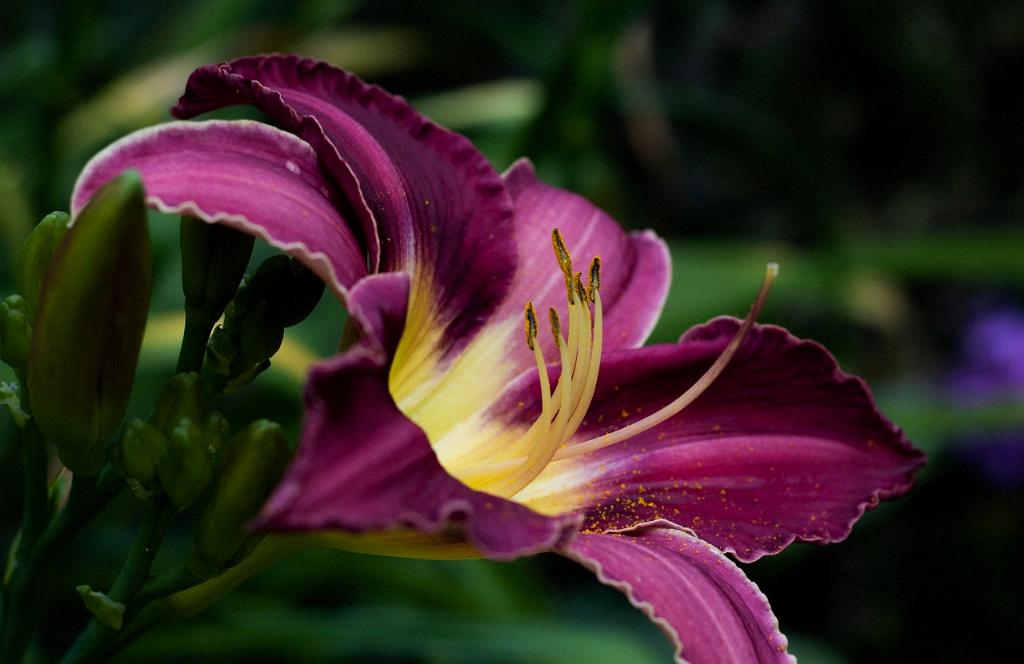Daylilies are typically known for their vibrant colors and graceful blooms, but sometimes you may encounter a situation where your daylilies refuse to bloom as expected. It can be frustrating to see your garden devoid of those lovely blossoms, but fear not, as there are several reasons why your daylilies may not be blooming as they should.
Insufficient Sunlight
One of the primary reasons why your daylilies may not be blooming is due to inadequate sunlight. Daylilies thrive in full sun conditions, requiring a minimum of six hours of direct sunlight daily to produce abundant blooms. If your daylilies are grown in a shaded area, they may not receive enough sunlight to trigger blooming, resulting in sparse or no flowers.
Poor Soil Quality
The quality of the soil in which your daylilies are planted plays a crucial role in their blooming performance. Daylilies prefer well-draining soil rich in organic matter. If the soil is compacted, lacks nutrients, or retains too much moisture, it can hinder the growth and blooming of your daylilies. Conduct a soil test to assess the pH levels and nutrient content of the soil and amend it accordingly for optimal blooming.
Overcrowding
Another common issue that may be preventing your daylilies from blooming is overcrowding. When daylilies are planted too closely together, they compete for resources such as nutrients, water, and sunlight, resulting in stunted growth and reduced blooming. Ensure proper spacing between daylily plants to promote air circulation and efficient nutrient uptake, allowing them to bloom to their full potential.
Inadequate Watering
Proper watering is essential for the health and blooming of daylilies. Inconsistent or insufficient watering can stress the plants, leading to reduced blooming or no blooms at all. While daylilies are drought-tolerant once established, they still require regular watering, especially during dry periods or when grown in containers. Ensure that the soil is evenly moist but not waterlogged to support healthy blooming.
Improper Fertilization
Fertilizing your daylilies is important for providing them with the necessary nutrients to support robust growth and blooming. However, using the wrong type of fertilizer, applying it in excess, or neglecting to fertilize can all impact the blooming of your daylilies. Use a balanced fertilizer formulated for flowering plants and follow the recommended application rates to avoid nutrient imbalances and promote blooming.
Seasonal Factors
Daylilies are known for their ability to bloom profusely throughout the summer months, but their blooming pattern can be influenced by seasonal factors. Some daylily varieties bloom earlier or later in the season, while others may have a shorter blooming period. If your daylilies have not bloomed yet, consider the specific blooming time of the variety you are growing and be patient as they may still bloom within their natural flowering window.
Pest and Disease Issues
Pest infestations or disease infections can also hinder the blooming of your daylilies. Common pests such as aphids, thrips, or spider mites can damage the foliage and buds of daylilies, affecting their blooming capacity. Similarly, diseases like crown rot or leaf spot can weaken the plants and inhibit blooming. Monitor your daylilies regularly for any signs of pest or disease problems and take appropriate measures to control them effectively.
Root Bound Plants
Root bound plants occur when the roots of a plant outgrow its container or planting space, leading to restricted root growth and nutrient uptake. If your daylilies are root bound, they may struggle to produce blooms due to the limited space and resources available to them. Consider dividing overcrowded clumps of daylilies, repotting them in larger containers, or transplanting them to a new location with sufficient space for healthy root development.
Environmental Stress
Environmental stress factors such as extreme heat, cold, or drought can impact the blooming of your daylilies. Sudden temperature fluctuations, prolonged periods of heat or cold, or water stress can cause the plants to divert their energy towards survival rather than blooming. Provide adequate mulching, shading, or watering during extreme weather conditions to help your daylilies cope and resume blooming once the stress has passed.
Age of the Plants
The age of your daylily plants can also affect their blooming behavior. Young daylilies may take some time to establish their root system and reach blooming maturity, resulting in fewer blooms during the initial years. Conversely, older daylilies that have been in the same location for many years may experience diminished blooming as they age. Consider rejuvenating overgrown or declining daylilies through division, replanting, or refreshing the soil to stimulate blooming.
Genetic Factors
Lastly, genetic factors inherent to the daylily variety you are growing can influence its blooming tendencies. Some daylily cultivars are bred for prolific blooming, while others may naturally produce fewer flowers. If your daylilies consistently show poor blooming performance despite optimal growing conditions, it may be attributed to their genetics. Experiment with different daylily varieties known for abundant blooms to enhance the flowering display in your garden.

Conclusion
In conclusion, there are various reasons why your daylilies may not be blooming to their full potential. By addressing issues such as sunlight exposure, soil quality, watering, fertilization, pest control, and environmental conditions, you can help your daylilies thrive and produce the beautiful blooms they are known for. Remember to provide care and attention to your daylilies throughout the growing season to ensure a rewarding blooming experience in your garden.
